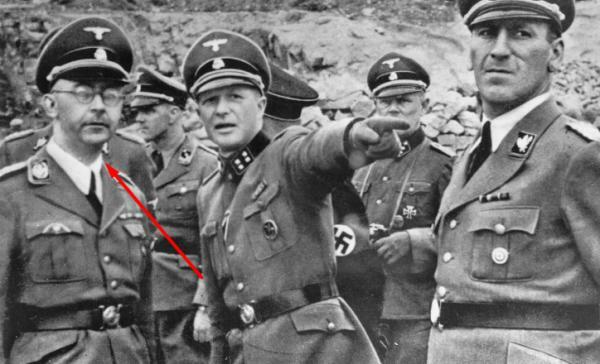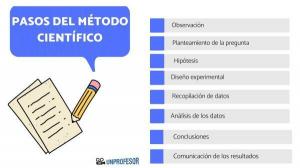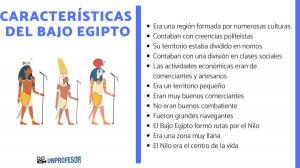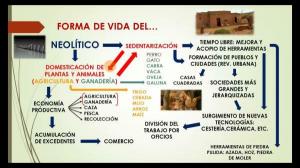Himmler in World War II

When talking about the World War IIIt is very important to analyze the figure of Heinrich Himmler, being one of the most important people in Nazi Germany and one of the most influential in these years of conflict. For all these reasons, in this lesson by a Teacher we offer you a summary of the figure of Himmler in World War II, to know all the events in which he participated.
Index
- Himmler's childhood and rise
- Himmler's role in World War II
- Himmler's end
Himmler's childhood and rise.
Heinrich Himmler was born in Munich in 1900, being the son of a conservative and Catholic middle class family. From a very young age, Himmler had a series of physical ailments that prevented him from carrying out sports activities, causing the young German began to focus on history and humanities, focusing especially on everything related to nationalism Germanic.
From a young age, Himmler tried to enter the military, but his physical and respiratory problems did not make him fit to enter these disciplines. Therefore, Himmler began to study both debate and
agronomy, being at this time when the first antisemitic impulses of him were born. Himmler began to hang out with far-right groups, many of which were anti-Semitic and openly critical of the Treaty of Versailles. The turning point for Himmler came in 1923, when German hyperinflation made his parents unable to afford his doctorate and Himmler entered the Nazi Party.Himmler in the Nazi Party and the SS
Because of his interest in war, Himmler entered the paramilitary groups of the Nazis, him participating in Hitler's coup attempt, although he was not arrested for it. Angry at his new view of the world, he gradually abandoned Catholicism and went to occultism, believing in many of the Norse beliefs.
With Hitler in jail, the Nazi party was in chaos and Himmler took advantage of this to move up the ranks. party, occupying more and more important positions, and becoming habitual that he was the one who spoke in the rallies. It was at this time that Himmler entered the H.H, which at that time was a much weaker group.
In 1929, Himmler convinced Hitler of the need to transform the SS into something much more powerful, and for this the Führer appointed him leader of this paramilitary group, greatly increasing their number. In 1934 he was appointed leader of the Gestapo, joining her to the SS, and becoming the most powerful person in these organizations after eliminating his possible rivals in the Night of the Long Knives.
Thanks to all this, in 1935 Himmler controlled the German police, the concentration camps and Hitler's personal guard.

Himmler's role in World War II.
In 1939, Hitler and his main allies were looking for a way to start the invasion of Poland without seeming guilty. In this situation, Himmler developed the so-called himmler plan, which was based on dress german soldiers in polish costumes and start riots, to make it appear that the Germans were attacking in response to Polish offenses. Thanks to this plan, Nazi propaganda made the invasion seem necessary, initiating the Second World War.
At the beginning of the war, Himmler took control of the Einsatzgruppen, this being a branch of the SS, and being known as death squads. This group, under Himmler's orders, murdered all kinds of people, both Jews and enemies of the Germans, and he was also in charge of capturing Jews and sending them to ghettos or concentration camps. concentration. With the passing of the months, and the successive conquests of new territories, Himmler's men took care of more and more Jews and Himmler's influence was greater every day.
In June 1941 Himmler was entrusted with the so-called General Plan for the East, since due to the invasion that the Germans were going to carry out on the USSR, he needed an action plan. Himmler's plan was that once the USSR was occupied, some ten million Germans would occupy a large part of its territory, expelling to the east many of the Russian citizens and leaving others to die Many.
In general we can say that Himmler's main actions were three during world war II:
- The search for allies to increase the number of members of the SS, reaching agreements with European powers such as Italy or Spain, and Himmler himself who met with them.
- repression and extermination of all the enemies of Germany, being the SS the one in charge of running the extermination camps in which the Jews died, but also to search and find these Jews, their allies and other races such as the Slavs.
- And Himmler's last task in World War II was the Germanization, since one of his main tasks was to create German societies in the occupied territories, replacing the local population with Germans.

The end of Himmler.
To conclude this lesson on Himmler in World War II, we must talk about what the last moments of these characters were like when the Nazi regime he seemed to be at his end.
In the last moments of the war, everything seemed lost for Germany, suffering numerous defeats on all fronts, and everything seemed to indicate that the victory was going to be for the Germans. allies. Himmler had enough to blame for this defeat, having committed Huge mistakes in the Prussian zone.
Seeing that defeat was drawing near, Himmler began to negotiate with the Allies to get rid of his war crimes, but he was discovered by Hitler, who accused him of treason, expelled him from the Nazi Party and sentenced him to death.
Himmler tried to leave Germany in disguise, escaping from both the Germans and the Allies, but he was discovered by the English in full flight. Fearing prison Himmler decided to commit suicide with a cyanide pill.
If you want to read more articles similar to Himmler in World War II - summary, we recommend that you enter our category of History.
Bibliography
- Padfield, P., & Baranowski, S. (1990). Himmler: Reichsfuhrer-SS (pp. 540-1). London: Macmillan.
- Himmler, K. (2014). Himmler according to correspondence with his wife (1927-1945). Taurus.
- Longerich, P. (2008). Heinrich Himmler: Biography. Siedler.



